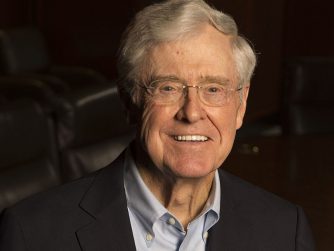
Get over the hump by considering these reads from the last week!
Why Inspiration Matters
“When your Daemon is in charge, do not try to think consciously. Drift, wait, and obey.” — Rudyard Kipling
In a culture obsessed with measuring talent and ability, we often overlook the important role of inspiration. Inspiration awakens us to new possibilities by allowing us to transcend our ordinary experiences and limitations. Inspiration propels a person from apathy to possibility, and transforms the way we perceive our own capabilities. Inspiration may sometimes be overlooked because of its elusive nature. Its history of being treated as supernatural or divine hasn’t helped the situation. But as recent research shows, inspiration can be activated, captured, and manipulated, and it has a major effect on important life outcomes.
Inspiration has three main qualities. Pyschologists Todd M. Thrash and Andrew J. Elliot have noted these core aspects of inspiration: evocation, transcendence, and approach motivation. First, inspiration is evoked spontaneously without intention. Inspiration is also transcendent of our more animalistic and self-serving concerns and limitations. Such transcendence often involves a moment of clarity and awareness of new possibilities. As Thrash and Elliot note, “The heights of human motivation spring from the beauty and goodness that precede us and awaken us to better possibilities.” This moment of clarity is often vivid, and can take the form of a grand vision, or a “seeing” of something one has not seen before (but that was probably always there). Finally, inspiration involves approach motivation, in which the individual strives to transmit, express, or actualize a new idea or vision. According to Thrash and Elliot, inspiration involves both being inspired by something and acting on that inspiration.
3 key elements of leadership communication
Consider music to help you communicate. Music is composed of three things: “melody,” which is made up of notes along the scale, “harmony,” which is the chords, and “rhythm,” the beat of the music. In listening to this explanation, it was easy to draw parallels to how leaders communicate messages to their teams.
Think about the next important message you must communicate. As a leader, are you making full use of all three musical elements? Here’s how to ensure your communication hits the right notes.
Make it memorable. In music, a melody is defined as “a pleasing series of musical notes that form the main part of a song or piece of music.” The melodies to our favorite songs are easy to remember and something that we enjoy hearing repeatedly. A catchy tune on a TV or radio commercial lingers long after we first hear it. In much the same way, your message’s main point must be memorable and easy to repeat. For example, a vice president of claims for an insurance company implemented a “one-and-done” customer service philosophy to emphasize the need for claims representatives to close claims after the first customer contact.
Technology Doesn’t Work Without Poetry
Change has always been with us, but the rate of change is changing. It’s no longer evolution, it’s revolutionary. The trajectory is changing, and the momentum is accelerating. It’s acceleration and trajectory change all at once. And three dimensionally.
But you really have to recognize that what moves people is not state-of-the-art technology, it is state-of-the-heart technology. The idea that this technology is a cold comfort. Unless the engineer can be the poet and the poet the engineer, unless there’s that connection between the two, technology doesn’t do anything.
Unless it moves something, unless it renders a benefit, unless it makes the distances closer, unless it makes it more resonant, more memorable, unless it offers a deeper meaning into your heart, into your soul, a deeper purposefulness, it’ll be vestigial, it’ll be gone.
So the idea is, don’t abandon state of the heart for state-of-the-art. Ask yourself a very important question. The benefit of this technology, how does it make us connect better? I don’t mean connect technically better, that’s important but how does it make us connect better. How does it get more and deeper heartfelt connection between people? Now I think a Twitter is an incredibly invaluable tool.
Power Shift: How car buyers are leveraging information
Car salesmen no longer have the power of information. Shoppers now have access to the same information, and that shifts the power from the dealer to the consumer. The dealer is now competing against other manufacturers, other dealers with the same vehicle, and the leverage held by the shopper.






